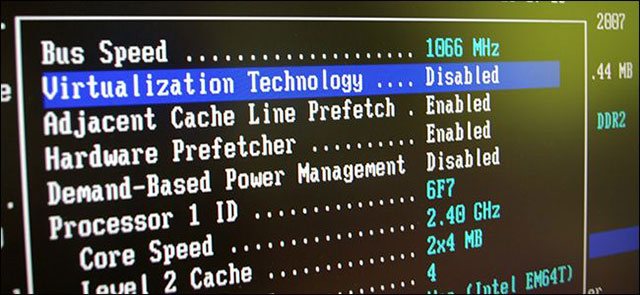Why Intel killed the BIOS, switched to UEFI?
At UEFI Plugfest, the hardware interoperability testing event hosted by the UEFI forum, Intel announced that by 2020 it will not use the BIOS anymore but will completely switch to UEFI.
Things to note when using UEFI instead of BIOS
BIOS (Basic Input / Output System) is a piece of code embedded in the PC's motherboard, which starts running when the user starts up the computer and wakes up all the hardware. Initially, it checked hardware, calculated RAM . and started downloading and running the OS. When the OS runs, it performs some basic services such as receiving keyboards, reading and writing on the screen, the drive.
The BIOS is an important part of IBM's Personal Computer's first PC in 1981. If you want to build it like a PC compatible, you must have a compatible BIOS. PC BIOS is attached to an Intel x86 processor and runs in 16-bit mode.
Over time, the BIOS gradually becomes less important. Using 16-bit mode means it runs very slowly, and since PC OS switched to 32-bit mode, people use 32-bit drivers to access the hardware instead of using the BIOS.
Going with x86 means that other platforms such as Sun's SPARC chip or Apple / IBM / Motorola PowerPC also have unpopular firmware. When itanium IA64 processor development in the early 2000s, x86 BIOS was no longer suitable, Intel turned to developing EFI for IA64.
The BIOS remains on the x86 machine, but due to its limited functionality, slow performance, Intel and many other companies are looking for other solutions. EFI extends to 32-bit and 64-bit x86 support.
Windows Vista Service Pack 1 x86 64-bit version introduces the ability to boot from UEFI. From Sandy Bridge's Intel processor introduced in 2011, UEFI began to become popular. Now almost every machine, almost all x86 machines use UEFI, not the BIOS. Hardware companies also take advantage of UEFI with faster boot capability.

The BIOS has gradually become obsolete
If you don't use the BIOS anymore, Intel will do it. We are currently in transition. Although all new hardware and OS can run UEFI, older OSs - DOS, 32-bit Windows before Windows 7, 64-bit Windows before Windows Vista - cannot run. Some hardware is also required to use the BIOS. The system-wide BIOS called ROM Option helps BIOS services recognize additional hardware, such as a floppy disk controller.
The first UEFI generation has the ability to be compatible with the BIOS programming interface, which means it can meet the software and hardware that requires the BIOS. It was later changed to native. To resolve this, for older OS or older hardware that requires BIOS, the new firmware will operate in BIOS compatibility mode called Compatibility Support Module (CSM).
Most PCs today turn off CSM even if it can be turned on. In contrast, many discrete motherboards have CSM enabled and can also be turned off. The problem here is Secure Boot and Microsoft's hardware requirements. Secure Boot is for protection against malware, but only when CSM is turned off.
Intel intends to completely remove CSM, simplify hardware - no authentication is required when the CSM is on / off - ie the developer (network card, floppy disk controller, video card) does not need an Option ROM, only Prevent if anyone uses new hardware with old software.
Abandoning CSM means that Intel will also have to abandon other old technologies. Even 65-bit Xeon Platinum 8180M processors, Intel's new and very good 28 cores also boot as if it were a 16-bit 8086 chip and still have 16-bit mode. Remove the BIOS and CSM will open the door to remove all these old modes.
See more:
- Intel expects to end Legacy BIOS support by 2020
- 5 tips for using the BIOS to help you master your computer
- Instructions for setting up BIOS and UEFI passwords to protect data on your Windows 10 computer safely
You should read it
- 5 tips for using the BIOS to help you master your computer
- How to set up BIOS to boot from USB / CD / DVD, external hard drive
- Differences between UEFI and BIOS
- Instructions for upgrading BIOS
- How to check the computer that supports EFI / UEFI or Legacy BIOS
- Intel expects to end Legacy BIOS support by 2020
- Concept of UEFI standard in computers
- How to Enter BIOS
- Instructions for accessing BIOS on Windows 8
- BIOS - Basic information for beginners
- Instructions for entering BIOS on different computers
- How to view the Last BIOS Time index in Windows 10






 Concept of UEFI standard in computers
Concept of UEFI standard in computers Differences between UEFI and BIOS
Differences between UEFI and BIOS Intel expects to end Legacy BIOS support by 2020
Intel expects to end Legacy BIOS support by 2020 5 tips for using the BIOS to help you master your computer
5 tips for using the BIOS to help you master your computer How to check a computer using UEFI or BIOS
How to check a computer using UEFI or BIOS How to check the computer that supports EFI / UEFI or Legacy BIOS
How to check the computer that supports EFI / UEFI or Legacy BIOS